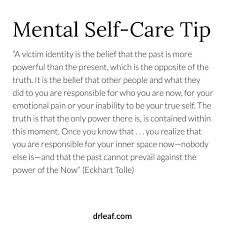
You may not be familiar with the best ways to prepare yourself for self-defense. This article will discuss both the mental and physical preparation that you should have. We'll also cover techniques you can use to protect yourself. These are just a few of the ways that you can prepare. It doesn't make a difference what your age is, you can learn self-defense awareness techniques at any age. Take a look!
Self-defense awareness
Regardless of whether you're an experienced fighter or a newbie, self-defense awareness is an invaluable skill to have. Self-defense awareness is the ability to recognize violence and prepare accordingly. This awareness does not mean that you should be suspicious. It is important to know your options, understand them, and be ready to fight if necessary. Self-defense awareness can be achieved by being more aware of what is happening around you and becoming more aware of yourself.
You can take a SAFE class to learn more about self-defense. Basic techniques, such as the palm strike or bear hug, can be learned. Repetition is key to physical self-defense. Alexandra Gordon-Smith, a junior English major, learned through a SAFE class that self-defense awareness was important for when she feels unsafe on her commute. She felt more confident having learned basic self defense techniques through SAFE.
Mental preparation for self defence
Although self-defense skills are essential for learning the basics of a martial arts, it is important to also train your mind. By understanding your body's reactions to threats, you will be better prepared to react in a safe and effective manner. Developing a positive attitude is essential to being able to respond effectively to danger. Learn how to cope effectively with stress, fear, and anxiety is an essential skill. It can mean the difference between life and death.

To realize you are the best person around, you must have the mentality to not be taken advantage. When someone is pursuing you, they will be looking for a weakness in your resolve to resist. Mental preparation is key. The ability to say "no" is something that can be learned through practice. It will also complement your physical self defense training. These are some ways to learn the art of saying no.
Prepare for self defense with physical training
Don't stare at your phone as you walk. Instead, make sure you have your keys handy. Be honest with yourself about what makes you feel unsafe. Be friendly and verbal if the person is someone you are familiar with or a romantic partner. Be clear if the person is intimidating or aggressive. Respect the boundaries of others. By having basic knowledge of physical self-defense awareness, you can be in the best defense position.
Situational awareness can be a huge asset for your safety. However, it won't work if you don’t know what to do. Knowing how to recognize physiological cues is an important step in improving your self-defense. These signals should be recognized and picked up by you. This will give you an advantage when it comes time to defend yourself.
Techniques for self-defense
For many situations, self defense awareness is vital. The first step is to remain aware of your surroundings and general proximity to others. Eye contact with people is a good way to defend yourself. While some people may feel uncomfortable about looking at people, it is important to remember that a potential attacker would know who they are in a crowd and wouldn't want to pick you as their easy target. This awareness is essential for recognizing precarious actions and suspicious behavior.

You need to know what your weaknesses are before the attacker starts to choke you. The most common attacks target the eyes, nose, throat, solar plexus, groin, and neck. These attacks can be prevented by knowing the right move. There are many self defense techniques that can be used to protect each of these parts. Below are some basics techniques to help you defend yourself in danger situations.
FAQ
What does the milk do for men
The next time you buy milk, think about what else you could use it for. It could also be beneficial to quit drinking coffee.
Children and adults both have found milk to be beneficial. Milk is rich in nutrients for children, including vitamin D and calcium.
It also aids digestion, improves bone strength, and promotes weight gain. People who consume dairy products have lower rates of illness and better immune systems.
People who have difficulty digesting milk are also likely to be able to enjoy its many benefits, even if they do not have stomach problems.
Consider drinking more milk, instead of sodas or juices. Milk contains more calcium and vitamin D, which can strengthen your bones and teeth.
You can make yogurt with plain low-fat milk if you don't love the taste of milk. Yogurt can be a great substitute for milk, as it has fewer calories and more protein.
Probiotics are also found in yogurt, which help with digestion and boost immunity.
Try warm milk to help you fall asleep. Warm milk can relax muscles and increase serotonin levels. This will help you sleep well.
What's a good routine for a daily workout?
Regular exercise is key for staying in shape. You don't have to do the same type of exercise every day, it doesn't really matter. The most important thing is consistency. It is important to stay consistent in order to get results.
Begin by starting to do a little bit of physical activity each day (like walking). You can gradually increase the amount of exercise you do until you have 30 minutes each day. This could include running, cycling, swimming, weight training, yoga, or aerobics classes.
It is important to exercise every day of the week. Don't miss any sessions unless you have an excuse.
Wear appropriate clothing and footwear when exercising outdoors. Also, consider weather conditions and how they might affect your ability or safety while exercising.
Make sure that you drink plenty of water while you're exercising. Avoid alcohol consumption during this time as it can lead to dehydration. Avoid caffeinated drinks, such as coffee, tea and cola. They will not only give you more energy but also dehydrate you.
It's common to feel tired after your first workout. If you stick with your training program, you'll feel more awake and alert.
Do Men Need A Gym Membership?
A gym membership does not have to be required for men. However, your money will be more valuable if you join a gym.
Many gyms offer free trials that let you try the facilities before you pay any fees.
You can use the gym at any time you want, and it doesn't cost anything. It's easy to cancel your membership when you decide whether or not you love the gym.
Can I go to the gym seven days a week?
Yes, you could go to the gym seven days per semaine but not all at one time. You have to find a time where you can do this without feeling too exhausted and drained.
This will help keep you motivated and give you energy for other activities.
You also need to ensure that you eat well enough during these times. This will ensure you don't feel tired and sluggish when going to the gym.
Last, you must make sure that there isn’t another thing competing for your attention. It is possible to skip exercising on school nights if your children are involved.
Statistics
- Cardmembers earn 5% Back at Amazon.com with a Prime Credit Card. (amazon.com)
- According to the American Academy of Dermatology (AAD), men over 50 are at a heightened risk of developing it. (healthline.com)
- Are You One of the 20% of Guys (mh.co.za)
- 10 pounds in a month is likely during a lean bulking phase, especially for beginners. (muscleandstrength.com)
- An estimated calorie range for moderately active adult males falls between 2,200 to 2,800 calories per day, depending on age. (eatright.org)
External Links
How To
How do I lose fat by exercising?
Exercise can help you burn calories and increase your metabolism.
At moderate intensity, you will lose weight easily.
These tips will help you burn fat and keep fit while exercising.
-
Cardio exercises include walking, running, swimming, cycling, running and jogging.
-
For 30 minutes, do it three times a week.
-
You can lose weight by adding strength training to the routine.
-
Avoid intense workouts. You can build muscle without breaking down muscle tissue.
-
When exercising, make sure to drink lots of water. Water flushes out toxins, and keeps your body properly hydrated.
-
After exercising, consume low-fat protein smoothies. Protein shakes boost energy and repair muscle tissue.
-
Take smaller meals throughout each day to avoid feeling hungry.
-
Don't skip breakfast! Skipping breakfast can leave you feeling tired and sluggish.
-
Take care of your mind. Stressful situations can slow down metabolism.
-
Keep a positive attitude. Studies show that people who believe they are overweight gain more weight then those who think they are attractive.
-
Get enough sleep. A lack of sleep makes it difficult to lose fat.
-
Always be active. Make sure you get up and move every hour.
-
Maintain a healthy diet. Eating right keeps you feeling full and satisfied longer.
-
Find relaxation techniques. An anxious mind won't allow your body release stress hormones, which can lead to the destruction of muscle tissue.
A balanced diet contains all necessary nutrients for growth and development.
Eat six small meals each day instead of three large ones. This gives your body the time it needs to process what you've eat.
You need about 500 milligrams of calcium daily to maintain strong bones. Calcium can be found as a dairy product such as milk, yogurt and fortified soy drinks, orange juices, cereals, breads, and cereals.
Calcium is found in leafy vegetables, beans and tofu, as well nuts, seeds and cheese.
Vitamin D is required by the body to absorb calcium. Vitamin D can also be found in some fortified foods such as eggs, fish, and yolk.
Vitamin E is important for skin health. Vitamin E is found in vegetable oils and wheat germ oil, as well as peanuts, almonds and sunflower seeds.
Your body requires zinc for normal immune function and wound healing. Zinc is found in seafood, oysters legumes meats, whole grains, whole grains and meats.
Zinc deficiencies can lead to fatigue, decreased appetite, depression, and reduced immunity.
Too much sugar leads to insulin resistance. This results in higher blood glucose levels. Insulin resistance is linked to weight gain.
Insulin resistance occurs when the bloodstream is full of free radicals. Free radicals are molecules with unpaired electrons that damage cell membranes and other parts of the body.
Food additives, pesticides and herbicides, as well as preservatives, smoking and radiation are all sources of free radicals.
Free radicals can lead to cancer and heart disease, diabetes mellitus, arthritis, asthma, and premature aging.
A well-balanced diet rich in antioxidants is the best way for you to avoid free radical damage. Antioxidants protect against oxidative damage.
Vitamin C (found on citrus fruits), Beta carotene, found in carrots and sweet potatoes, spinach and broccoli, cantaloupe (found in tomatoes, mangoes and peppers), and Vitamin E (found nuts, olive oil and avocados).
Additional antioxidant nutrients include selenium and copper, manganese and zinc.
Selenium protects cells against oxidative damage from free radicals. Selenium is found in Brazil nuts, tuna, liver, kidney, shrimp, cod, turkey, beef, lamb, pork, and chicken.
Copper protects eyes, brain, lungs and red cells. Copper is also found in poultry, meat, and organs.
Manganese forms an essential part of bone structure. Manganese may be found in brown rice or spinach, bananas and prunes as well raisins, oatmeal and lentils.
Zinc is necessary for average growth, reproduction, and wound healing. Zn is found in lean meats, poultry, white fish and eggs.